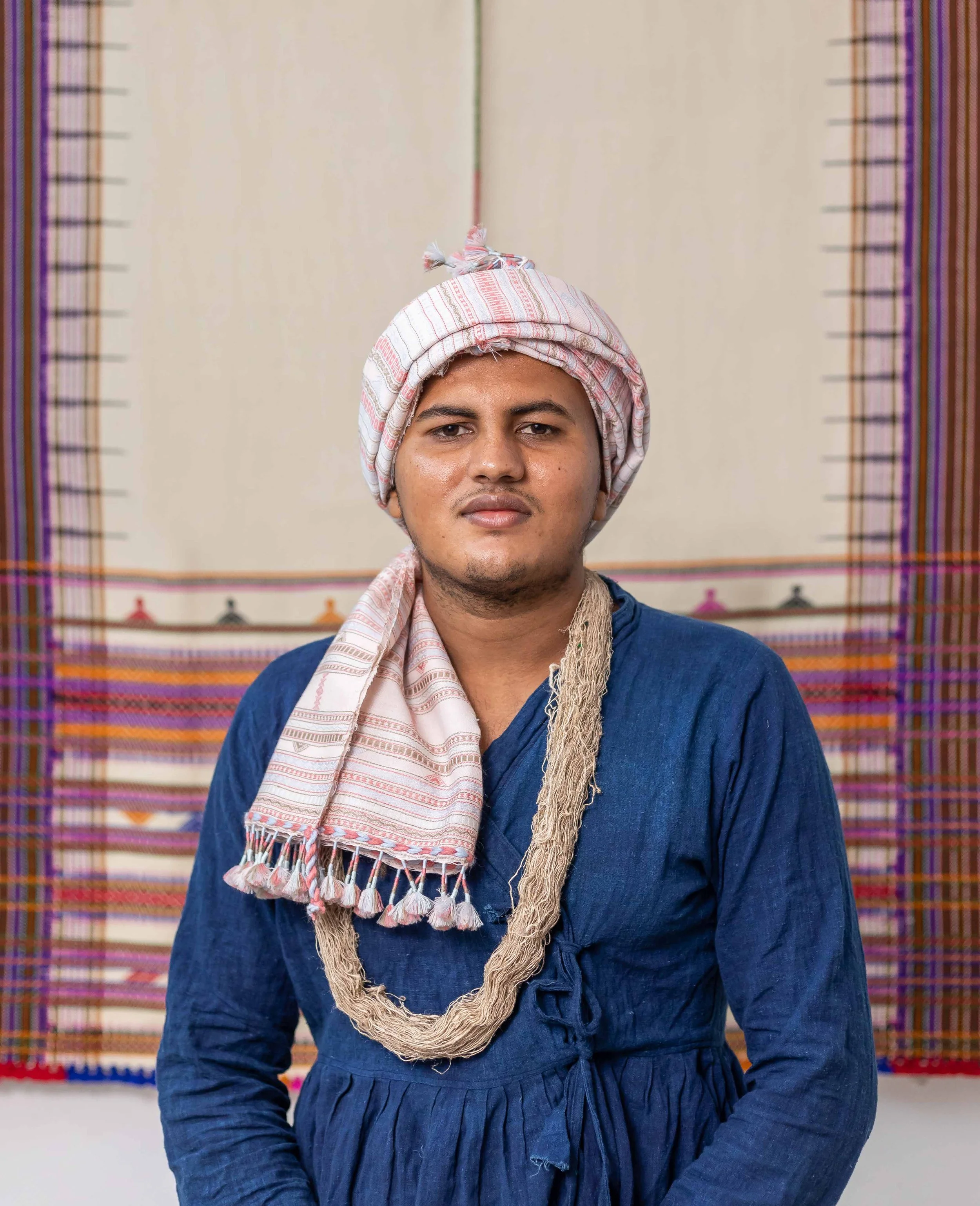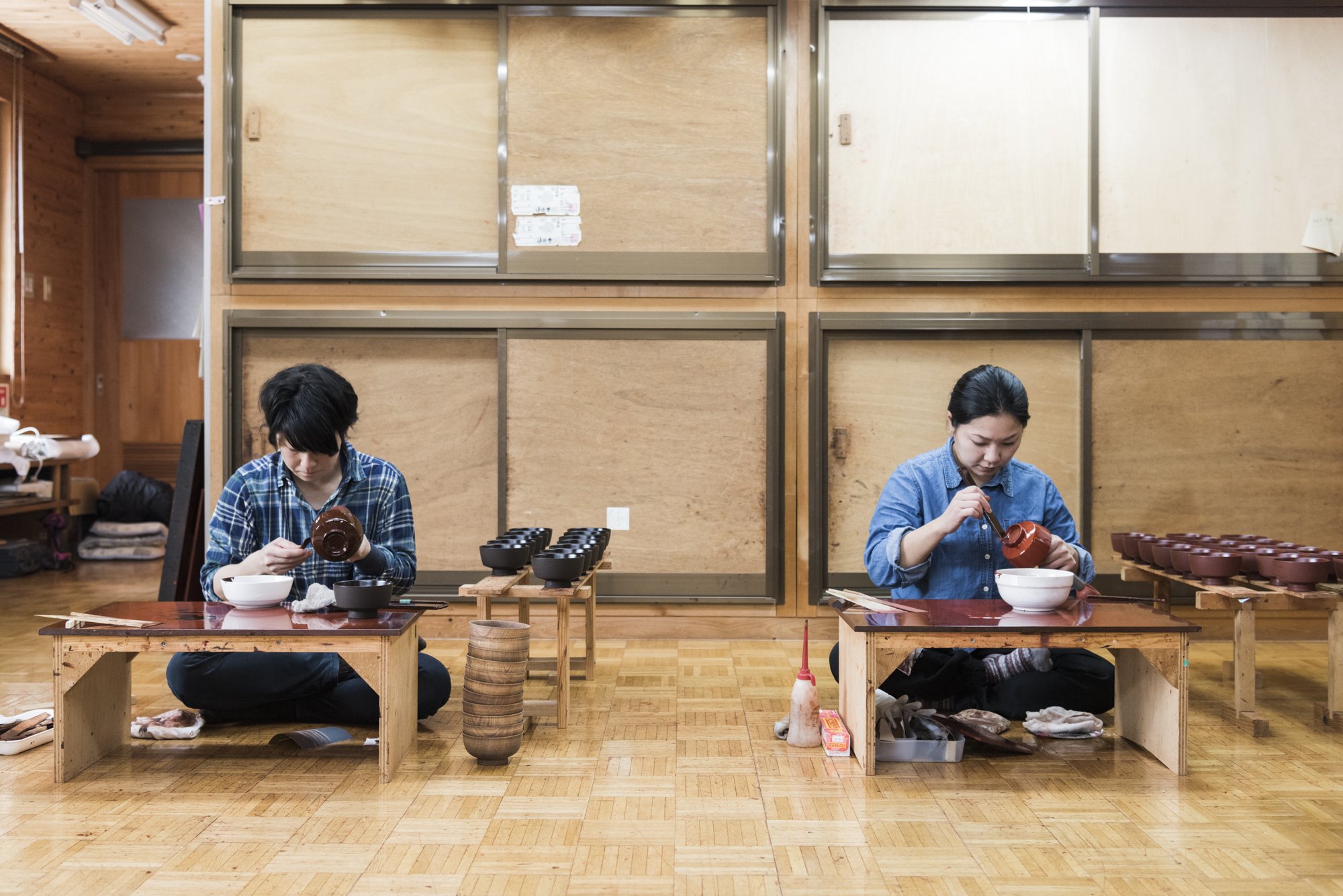Rajan Bhimji Vankar
Colorful Textiles Offer Protection From the Kutch Desert
In the arid terrain of the Kutch District on the India-Pakistan border agricultural cultivation can be difficult, so craft is a way of life. Weaving is a popular trade in rural areas of the region, and traditional Vankar Kutch weaving dates back 600 years to when artisans from the Marwada community in Rajasthan migrated to Kutch. Rajan Bhimji Vankar, who learned the trade from watching his father and grandfather in their family workshop, is a fourth-generation weaver from the village of Sarli. He is already recognized as a master of the craft despite being only in his early twenties.
In Rajan’s scarves, stoles, shawls, and blankets, colors range from muted earth tones to cool blues, to hot pinks and nearly neon oranges woven from a mix of luxurious materials including local Desi and pure fine Merino wool, handspun Tussar and Eri silks, and indigenous Kala cotton. His weavings are adorned with intricate geometric motifs and patterns, created with the addition of an extra weft (horizontal yarn that passes across the loom). Rajan incorporates contemporary ideas inspired by the international design community with traditional Vankar weaving patterns that are symbolically significant in Kutchi culture. Traditional motifs include Chomukh, a cross-like shape made from a pattern of triangles; Dhunglo, another triangular pattern representing mountains; Saat-Kanni, diamond shapes signifying eyes; and many others.
Rajan describes the network of farmers, vendors, tradespeople, and artisans who contribute to the Vankar weaving tradition as an “ecology of collaborative effort,” noting the many hands and processes it takes to bring a finished garment to a customer. Designers/weavers like Rajan bring the pieces together, continually putting effort into reviving and evolving the craft tradition in India and abroad.









